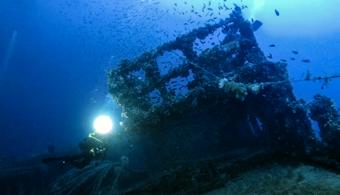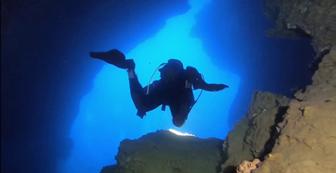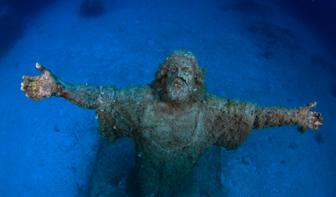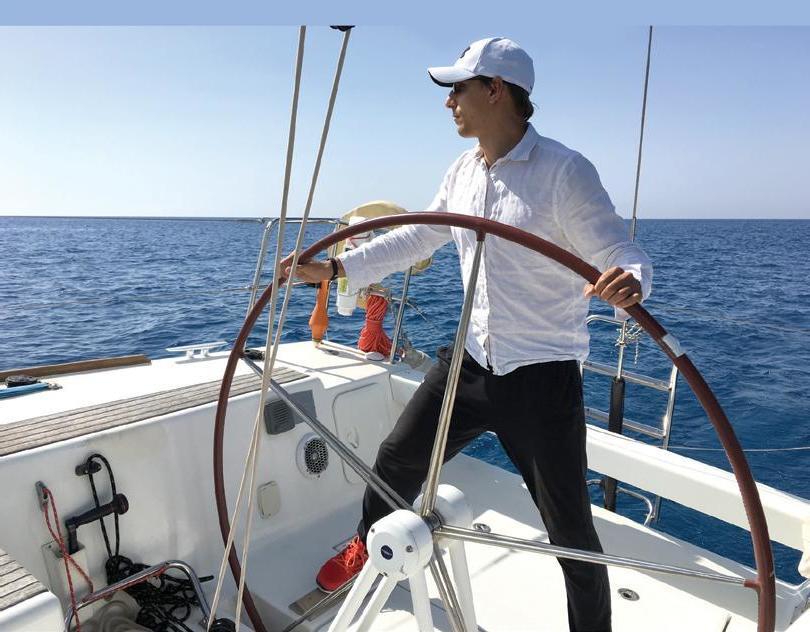
4 minute read
BEST DIVING SITES BY BOAT
BEST DIVING BY BOAT SITES
The Maltese islands are in their element in the summer: blue seas as far as the horizon, blue skies that don’t fade until late, and a sun so bright and constant that every day that dawns is a good day for being out on the water. The harbours and coasts in Malta are dotted throughout with boats, and you can’t go too far in any one direction before you come across a stretch of beach or pier or bright blue sea.
Advertisement
With summer, on us, and the heat showing no sign of slowing down, being out on the water day in and day out is an excellent way to keep yourself occupied and get in some muchneeded sight-seeing that you might not find written down on any guided tour or map.
Malta is host to some incredible natural surroundings: beyond the old citadels, the catacombs, and the vast, sweeping openness of the north, there’s also bristling ecosystems of fish underneath the surface of the sea, hidden sea-caves, and a wealth of underwater dive-spots that both the connoisseur and the hobbyist can enjoy. Furthermore, several these dive-spots are impossible to reach except by a chartered boat. So, if you’ve already got your own, then you can spend a summer idling in the Mediterranean, touring Malta alone but for your crew, your family and friends, and the fish that eddy beneath the waves. Here are a few to get you started.
Fairey Swordfish
Only recently discovered, the Fairey Swordfish was a biplane that fell into the sea in 1934 due to catastrophic engine failure; the pilot was picked up by the Royal Air Force air-sea rescue service, and the Fairey Swordfish went unnoticed until about 2017. It’s located at a depth of 65m from the surface and has since
Fairey Swordfish
been reclaimed by both sea life and the sea. Approximately 5KM off the Sliema coast, it’s not the most comfortable dive for beginners and had best be left to people who have some experience in diving already.
Il-Qaws
Drive your vessel to the first inlet in Ras idDawwara and anchor down; you’re in for a rare tour of one of Malta’s least-known diving sites. Make sure to keep the cliff wall on your right, and proceed inwards; while the entry point of the dive starts at 50 metres and deepens, the further along the dive becomes shallower. Pack a torch: you’ll need it to identify the ridges in the cliff face and to catch a good view of the pink algae and nudibranchs that line this dive throughout. If you’re a photography enthusiast, we also recommend a camera to take some coveted shots of the deep. Please keep a lookout for the tiny bluefish that have made this place their home!
Le Polynesien
A First World War French ocean liner, SS Polynesian was sunk by a torpedo in 1918 and rested around 3km east of Marsaskala. For having lain underneath the water for more than a hundred years, SS Polynesian is in good shape and can be explored at less of a risk, though caution should always be exercised in the case of diving. From the outside, you’ll be able to see the front deck cannon and anchor, as well as the cargo bay, propeller, and stern deck cannon. Make sure to take a torch to be able to see it, and advise Heritage Malta that
Le Polynesien


Il-Qaws
STATUE OF CHRIST
FAIREY SWORDFISH
IL-QAWS LE POLYNESIEN
MUNXAR REEF
you are planning to dive the wreck, as a new change in the legislature means you need a permit to dive there. It’s not the safest dive for beginners, as the water is exposed to strong currents, so exercise caution.
Munxar Reef
Also in the south, east of St Thomas Bay, is Munxar Reef, a dive of maximum 40 metres of depth with an unmissable view of a thriving sub-surface ecosystem. Here is where octopi,

Munxar Reef Statue of Christ

large fish, and moray eels live, and if you’re a burgeoning ichthyologist, you won’t want to skimp on this trip out. It’s an exposed area with strong currents, so you might want to skip this if you’re not confident in your diving.
Statue of Christ
Also, known as ‘Christ of the Sailors’, this statue is a 3m fibreglass and concrete structure located around 35m deep and close to the wreck of the Imperial Eagle. It’s been recently cleaned and updated with a new bronze plaque, and the new location for the statue means that it benefits from far better visibility, as initially, divers would struggle to make it out in the murky waters near St. Paul’s Island. It’s worth visiting if you want to see a little-known relic of Pope John Paul II’s visit, and if you’re interested in a relatively easy dive.
While we cannot recommend that you go on every dive on this list, if diving is a passion of yours, and you’re interested in seeing a side of Malta that is very different from what you’re used to, scuba-diving and sailing around the islands in summer is a must.
While these spots are by no means the only places to dive, and merely intended as a starter, the summer is the perfect time to explore the island from sea-side, and find your favourite spots to go to throughout the year.














